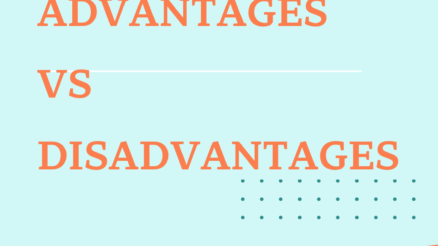Who are stakeholders of change management?
Anyone who has interest in organizational change or who is either positively or negatively affected by organizational change is stakeholder of change.
There are internal stakeholders such as change leaders, managers, supervisors, employees who are directly affected by change. There are external stakeholders such as clients, customers, shareholders, vendors, suppliers, regulator, business bodies and associations etc who are impacted by organizational change.
The change affects every stakeholder in a different way.
Every stakeholder has different and unique informational needs and responding to their needs and communicating change accordingly actually results into an effective change communication.
In this blog post, we’ll discuss why it is important and how to communicate change to stakeholders.
Lets’ discuss in detail.
Why it is Important to Communicate Change to Stakeholders
Many change leaders think that they have devised a successful change strategy, but they fail to proactively engage their key stakeholders.
If stakeholders are engaged properly and communicated effectively about change then there are higher chances of success of change initiative.
Stakeholders are important in change management because of:
- Sustained change: If stakeholders are engaged in change process and their buy-in is there then change will be more successful and it will sustain for longer period of time.
- Supporters of change: Taking all stakeholders on board means that your organization has more supporters and advocates and champions of change.
- Less resistance: As resistance to change is the major cause of failure of change so more engagement with stakeholders will help change leaders to overcome resistance towards change.
- Empowerment: By engaging all relevant stakeholder in change and involving them in decision making process will lead to empowerment of stakeholders who will contribute to that organization in one way or other.
- Diversity: Having different stakeholders on board brings diversity in change process and it will lead to more innovative solutions.
- Knowledge: If stakeholders are engaged in entire process of change, they will bring their knowledge, skills and expertise to organization which are useful to implement successful change.
Therefor, all major stakeholders must be on board and they must be informed about change to achieve desired outcome of change.
How to communicate change to stakeholders
Use these steps to actively engage key stakeholders early and on a regular basis.
1. Prioritize your stakeholders
Before you start engagement and communication with stakeholders, you first need to identify who are your stakeholders.
Identify all of the individuals who will be affected by the change, who will have influence or control over the change, who can oppose change and who will be interested in the outcome.
Consider both Internal and external stakeholders.
You may have a long list of both external and internal stakeholders. So, you need to prioritize them on the basis of their relevance to change and their impact or influence on outcome of change.
Knowing your stakeholders and priotizing them actually help you to make a focussed and strategic kind of communication strategy for them. Engagement with right stakeholders will save time and resources and have a positive impact on success of change initiative.
2. Understand your stakeholders and their resistance
The next step is to assess how each group of stakeholders is likely to respond and feel about change so you can communicate with them effectively.
You can analyze them by asking following questions:
- How they view change?
- Do they oppose change?
- How they contribute to change?
- What they want to know about change?
- What motivates them about change?
- What are their preferred communication channels?
Anticipate their actions and responses. Also, write out what steps you’ll take to address stakeholders’ concerns or persuade them to agree with your point of view on change.
3: Communicate with your stakeholders
As you execute change, you need to regularly communicate with stakeholders and handle any unexpected difficulties or concerns that occur.
Communication with stakeholders should be based on three broad phases of change management.
Communicate reasons and goals of change:
- Justify why change is being implemented.
- Communicate purpose of organizational change.
- Describe strategic goals that will be achieved through change
- Set measurable targets to assess whether or not strategic goals have been reached.
Communicate how change will happen:
- Communicate scope of change
- Explain change management strategy
- Communicate key tasks that will be performed
- Describe procedures for dealing with change.
- Explain how changes to an organization’s internal processes will influence its external stakeholders.
Communicate how performance will be measured:
- Explain key performance indicators of change
- Keep them updated on budgetary requirements and financial decisions
- Present timeline of change management
- Explain risks and contingency plans to stakeholders
4. Use mix of communication channels
It is important to identify what are those preferred channels for change communication through which all information and messages will be delivered to stakeholders.
Each group of stakeholder do have their own preference for these channel.
For example, some will prefer to have all necessary information in written form communicated through email, letters, memos, fact sheets, periodic updates and reports.
For many written material is not relevant and they want to have communication in detail. For them, face-to-face meetings, seminars etc may work. Many of them would like to hear about change through social media.
Every channel or medium has its own advantages and disadvantages, so selection of channels should be made keeping in view target stakeholders and their preferences.
5. Try modeling
Through their actions, leaders can successfully model not only the behaviours that change will necessitate, but also their belief that the change is beneficial to the company.
Leaders who understand the complexities and challenges of change will be better equipped to set the standard.
Their approval spreads to stakeholders, who then pass it on to employees. When this happens, change is five times more likely to succeed.
6. Communicate constantly and candidly
It’s not enough to do it once. It is vital that you convey the change frequently and through a variety of channels.
Allow your staff to communicate their concerns and questions about the strategy. Issues should be handled in the open rather than being left to grow in the dark.
Be truthful in your responses. When you’ve figured it out, be straightforward and consistent. When you’re unsure, tell the staff, then find out and share the information.
Also, be sure to personalize your change communications. Stakeholders are most concerned about how the change will impact them personally. All the concerns of the staff should be handled by making change communications personal.
7. Communicate through Involvement
Change leaders should recognize and reward people who adopt the desired change behaviors. Others will be encouraged to become involved and adopt similar habits as a result of this.
Change is rarely easy at work. It needs active participation, careful engagement and clear communication. People who are praised for their efforts are more inclined to support and even advocate for the change.
Consider how you may include stakeholders in the transformation process. Make a list of your ideas, such as the timing of every stakeholder’s participation. This might assist you in forming a team to change your organization.
Final Words
Your stakeholders of change initiative are important as they can make or break change project. They can be supporter of change or they can oppose it through different tactics. Their engagement can be managed well if leaders know how to communicate change with stakeholders. Communication is the key to engage stakeholders in change process. There are certain ways and means used to this sort of communication..



